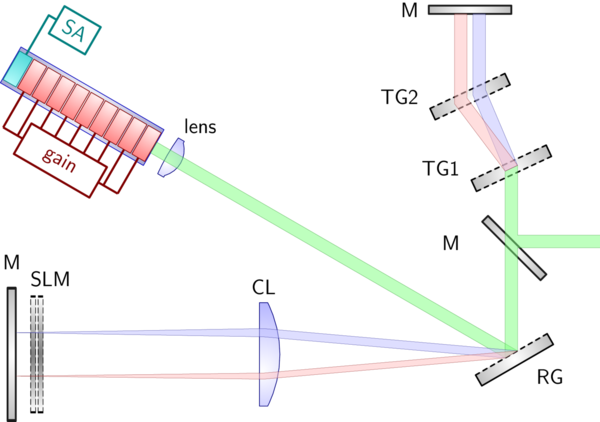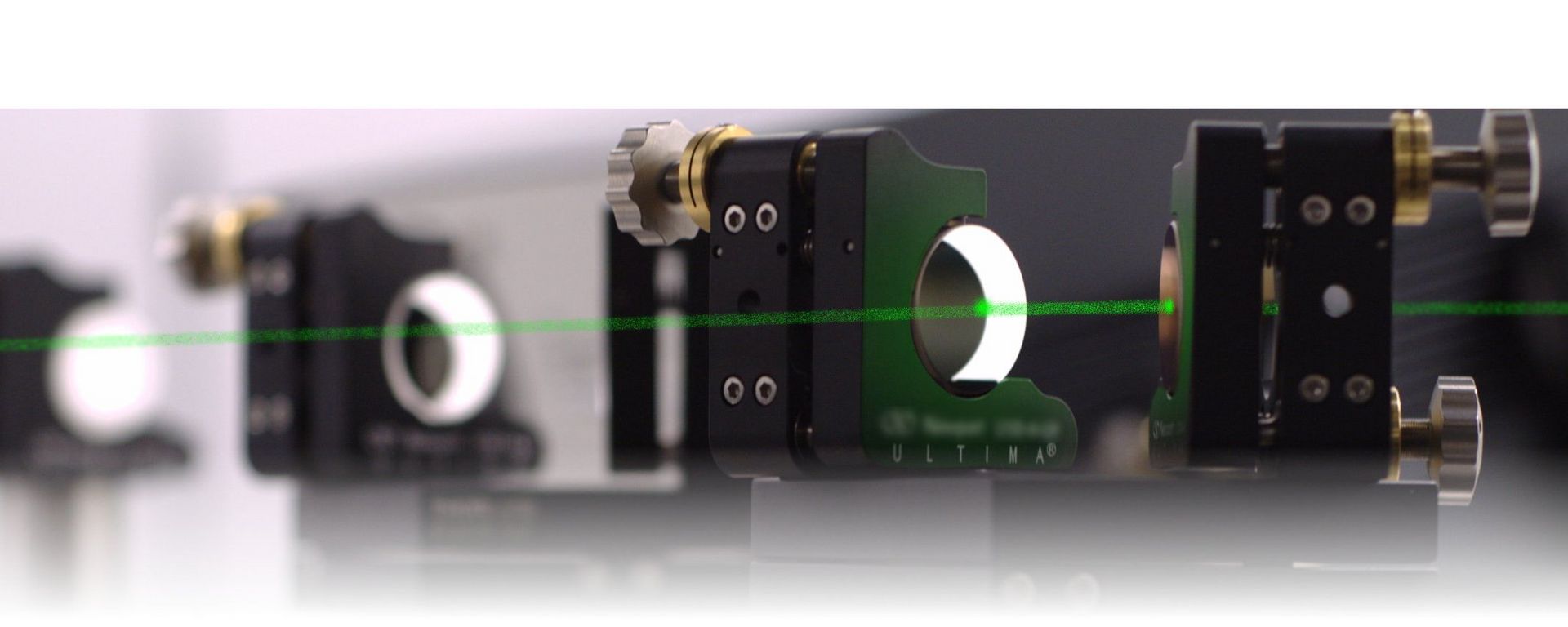Tunable lasers
Our working group has been dealing with the development, modification and characterization of tunable laser sources for several years. Most of these consist of a laser diode as active medium and an external resonator. Latter one results from a separate external mirror and the non-coated backside of the laser diode, whereas the front side of the laser diode is anti-reflection-coated. The most used geometry in our group is the FTECAL geometry (Fourier-Transform External Cavity Laser), where the different wavelengths of the emitted light are spatially separated and reach the external mirror at different points. The spatial separation is accomplished by putting a diffraction grating in the optical path. With a lens, the first or minus-first order of the diffracted light is directed to the external end mirror in that way, that the laser light is impinging as a horizontally separated spectral continuum, and reflected directly in itself. By use of a narrow slit-aperture it is now possible to select the wavelength for which reflection is guaranteed. Thus, only for this wavelength the resonator exists.

Fig. 1: Sketch of the FTECAL-geometry with pulse compressor
The sketched FTECAL-geometry is used for different applications: For example for the generation of terahertz-radiation. In this case, lasing is ensured for two different wavelengths by using two slit-apertures. In a nonlinear medium, these two wavelengths can generate the difference-frequency, which is in the terahertz-range. Another field of application is medical imaging: tunable laser sources are of interest for applications like OCT (Optical Coherence Tomography) and TGHI (Time Gated Holographic Imaging), for instance.
Colleagues:
